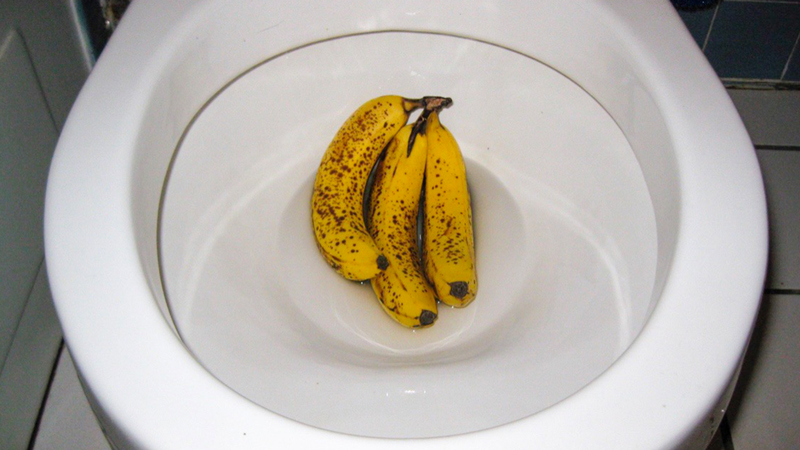Is it Safe to Dispose of Food in the Toilet?
Is it Safe to Dispose of Food in the Toilet?
Blog Article
The content following next on the subject of Is it safe to flush food (especially rice) down the toilet? is without a doubt insightful. Don't miss out on it.

Introduction
Lots of people are often confronted with the issue of what to do with food waste, specifically when it concerns leftovers or scraps. One common concern that emerges is whether it's okay to purge food down the commode. In this article, we'll delve into the reasons that people may think about purging food, the effects of doing so, and alternate methods for appropriate disposal.
Reasons why people could consider purging food
Lack of recognition
Some people might not know the possible harm triggered by flushing food down the commode. They might wrongly believe that it's a harmless technique.
Comfort
Flushing food down the bathroom might appear like a fast and very easy option to dealing with unwanted scraps, specifically when there's no nearby trash can available.
Laziness
In many cases, people might just choose to flush food out of sheer idleness, without taking into consideration the repercussions of their activities.
Consequences of flushing food down the commode
Environmental effect
Food waste that winds up in rivers can contribute to contamination and damage aquatic communities. Furthermore, the water made use of to purge food can stress water resources.
Pipes issues
Flushing food can result in stopped up pipelines and drains, triggering expensive plumbing repair work and troubles.
Sorts of food that need to not be purged
Fibrous foods
Foods with fibrous textures such as celery or corn husks can obtain tangled in pipelines and create blockages.
Starchy foods
Starchy foods like pasta and rice can absorb water and swell, resulting in blockages in pipes.
Oils and fats
Greasy foods like bacon or food preparation oils need to never be flushed down the commode as they can solidify and create blockages.
Appropriate disposal methods for food waste
Utilizing a waste disposal unit
For homes outfitted with garbage disposals, food scraps can be ground up and flushed with the pipes system. However, not all foods are suitable for disposal in this way.
Recycling
Particular food product packaging products can be reused, reducing waste and reducing environmental impact.
Composting
Composting is an eco-friendly means to throw away food waste. Organic products can be composted and used to enhance dirt for gardening.
The value of appropriate waste monitoring
Reducing environmental damage
Correct waste administration methods, such as composting and recycling, assistance decrease contamination and protect natural deposits for future generations.
Safeguarding plumbing systems
By avoiding the method of flushing food down the commode, home owners can stop costly plumbing fixings and preserve the stability of their plumbing systems.
Final thought
Finally, while it might be alluring to purge food down the commode for benefit, it is essential to understand the possible repercussions of this activity. By taking on proper waste administration practices and throwing away food waste properly, individuals can contribute to much healthier pipes systems and a cleaner environment for all.
FLUSH FOOD DOWN THE TOILET?
FLUSHING FOOD CAN CAUSE BLOCKED DRAINS IN YOUR HOME
All of the plumbing fixtures in your home are connected to the same sewer pipe outside of your home. This outdoor sewer pipe is responsible for transporting all the wastewater from your home to the Council sewer mains. Even small pieces of food that go down the kitchen sink can cause problems for your sewer. It should therefore be obvious that flushing larger bits of food, such as meat, risks a clog in either the toilet itself or the sewer pipes. Flushing greasy food is even more problematic because oil coagulates when it cools, coating the interior lining of your pipes.
THE TOILET IS NOT A BIN
Food isn’t the only thing that people shouldn’t be flushing down the toilet. People use the toilet to dispose of all kinds of things such as tampons, makeup wipes, dental floss, kitty litter and even underwear. Water goes to great lengths to educate residents about the high costs and stress placed on wastewater treatment systems simply from people flushing the wrong stuff down the toilet. It costs taxpayers millions of dollars each year, and homeowners thousands in blocked drain repairs.
FLUSHING FOOD IS A WASTE OF WATER
Flushing food is a waste of our most precious resource - water. In June this year Level 1 water restrictions were introduced to protect water supply from drought conditions. Much of New South Wales continues to be affected by prolonged drought with recent figures revealing up to 97 per cent of the state remains in drought. Depending on whether you have a single or dual flush toilet, every single flush uses between five and 11 litres of water. In the current climate this is a huge amount of water to be wasting on flushing food that should be placed in the bin (or better yet, the compost).
https://www.jabplumbingsolutions.com.au/blog/can-you-flush-food-down-the-toilet

I recently found that blog posting about Is it safe to flush food (especially rice) down the toilet? when doing a lookup on the search engines. Please take a moment to promote this write-up if you enjoyed reading it. I take joy in reading our article about Is it safe to flush food (especially rice) down the toilet?.
Call Today Report this page